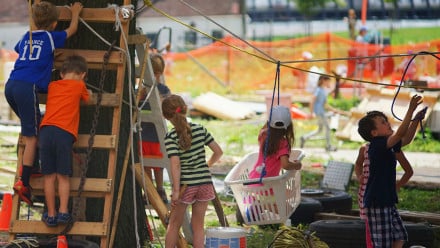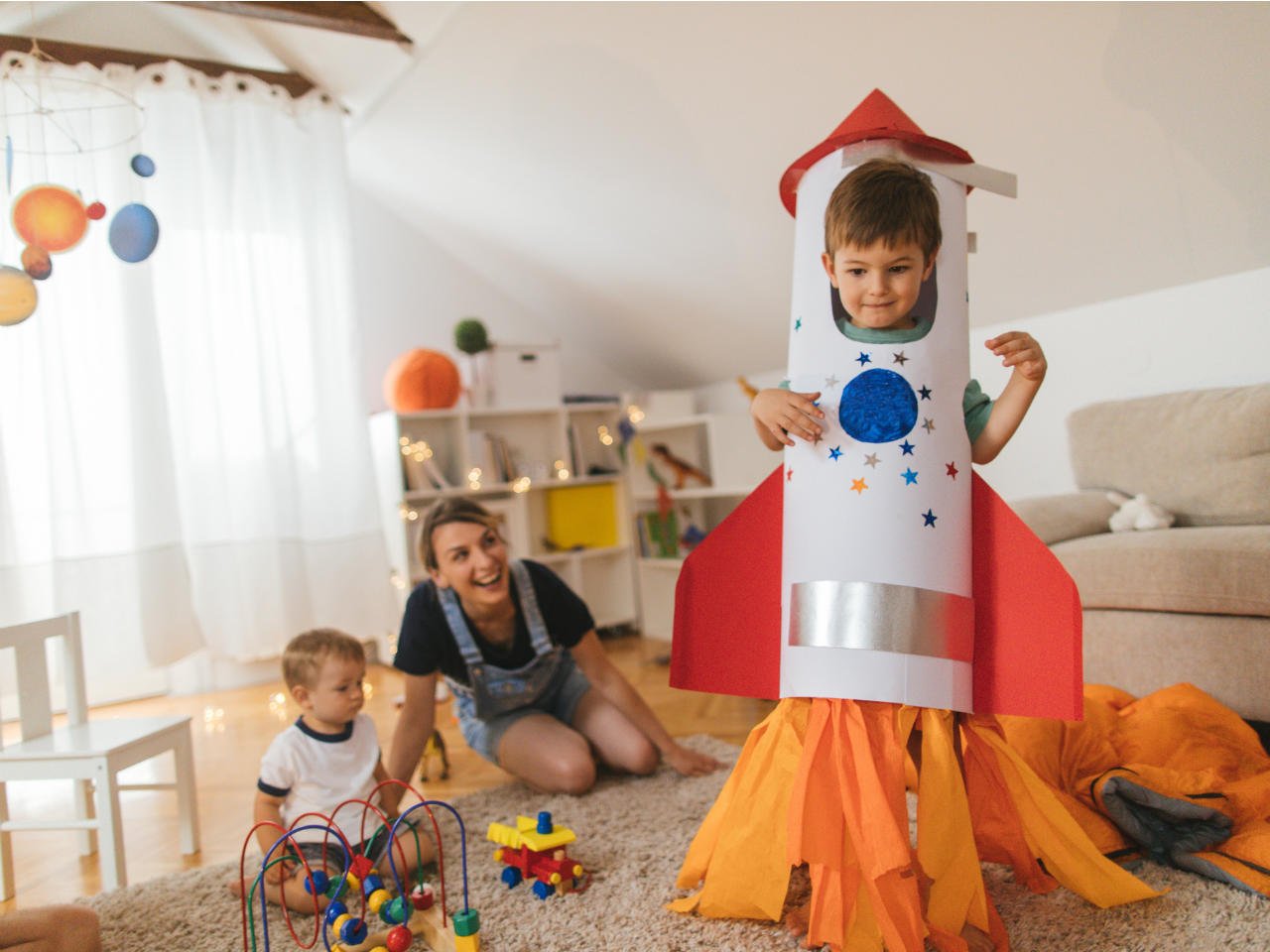Parenting expert Judy Arnall shares tips to help children think outside the box, solve problems and channel their artistic abilities at any age—from babies all the way to teens
Unlike personality traits, temperament traits and gender differences, every child is born with creativity. As children grow, they are highly creative, yet, as their executive function matures, and their natural inhibition becomes more controlled, they tend to be more guarded about their creative endeavors. Creativity is a great asset and is something that we want to preserve. Creativity helps children solve problems, gives them an artistic outlet and makes life fun. Here are some tips of how parents and caregivers can nurture creativity in children.
Nurturing creativity in babies and young children ages 0 – 5
Children this age love to play with anything and everything. They may reconfigure and recombine toys to suit their play, using and enjoying them differently than the manufacturer intended. Parents must allow this combination, even though they might prefer to keep toys organized and sorted. My kids would mash the play-dough in the sandbox to make “breaded patties.” Yes, it ruined the play-dough, but they learned about the adherence properties of sand to gooey materials. They would tape math pattern blocks together to make spaceships, although the blocks were intended to demonstrate fractions. And, oh, what they could do with a roll of tape! They would make gondola cars out of LEGO® blocks, sticking roll after roll of tape across the kitchen counters.
Use open-ended unstructured play materials. Such toys have no one right way of being played with and they offer excellent play value. They spur the imagination and inspire creativity. Take the example of a colouring book versus markers and plain paper. The colouring book dictates how the colour is to be drawn, what colour should be used, and so on. Plain paper does not impose any preconceived ideas on the child. It’s the same difference between LEGO® kits and a bucket of LEGO® pieces; the kit can only be built a certain way to build a preconceived project; the bucket of pieces can be made into anything the child imagines. See the blog at judyarnall.com for lots of creative play ideas.
Nurturing creativity in older children ages 6 – 12
Older children carry on imaginative play through playing house, theater, puppets, pirates, aliens, action figures. They play with household items and construction materials. Unfortunately, parents often pack up or give away creative materials such as dress-up trunks and arts and crafts because they assume that children have such things, or better substitutes, in school, which is not always the case. Parents often prefer the neatness of screens and controllers to paint on their rug, and who can blame them? But it is important to keep a range of creative play items accessible to their children and keep adding to them until about age 13, when they start leaving behind their physical toys.
In one of our best summers ever, we dug up the roots of two huge spruce trees that we had cut down in our backyard. The whole backyard was one giant mud puddle. Pails, shovels, toy cars, and a garden hose provided 20 neighborhood children with days and weeks of building fun. Their parents weren’t too impressed when I sent them home to use their own bathrooms, but the children had a blast! Mud, dirt, water, sand, props, and imagination. What more could they ask for?

We need to stop worrying and just let our kids playParents also need to let go. Give your child the chance to be bored. Then give them access to materials and they will use them to make their own fun. Don’t feel you have to fill their time.
And never give in to the urge to “fix” your child’s creation! Let it go. I see so many parents at the home improvement store’s Kids Building Days who totally take over their child’s project and build it themselves to get a perfect result. They even “touch up” the child’s very creative paint job! Kids notice, and it matters.
Our local mall has a children’s Halloween pumpkin-carving contest every October. It’s interesting to note that the elaborate, parent-carved pumpkins are not the ones that win! One year, we were too late in purchasing pumpkins for the contest. The kids really wanted to be included, so I asked them what we could do to solve the problem. They suggested we go to the store and purchase another kind of squash. We ended up with mini watermelons. Although we didn’t win the contest, people marveled at the creative melon faces and our kids learned that mistakes can bring out the creativity in people. Now that’s not only creativity in action, but problem solving as well!
Nurturing creativity in teens
Hold off on allowing screens as long as possible, but don’t be afraid of them either. I lamented when my teenage daughter quit writing, doing art projects, and drawing story books as she had in her younger years. I worried as she spent more time online and finally asked her why she didn’t do projects anymore. She replied, “Mom, I do lots of projects, I’m just taking my creativity online.” Sophie showed me what she did on her computer that was creative: she wrote fiction, poetry, short stories, and novels. Indeed, she was still very creative but in a different medium, somewhat like paint artists are different from sculpture artists.
Many computer games are based on creative play: The Sims, Garry’s Mod, Minecraft, and Spore all have creative elements embedded in the game. Because we never banned screen time, Sophie, Anna, and their brothers would modify computer games to customize characters, settings, and other content. Oblivion allows the creation of whole new sections of the game; World of Warcraft permits making new mods to customize the interface. Teens can write coherent essays and opinion postings in gaming forums, especially when they are arguing with another gamer on a debatable topic. There are online galleries where teens can post their artwork and photography and get feedback. They can post images from a tablet made especially for capturing charcoal-like drawings.
My son designed and created websites, wrote code to run electronic robots from the computer, and designed comics. Many teens create blogs, vlogs, PowerPoint presentations, music compositions, funny memes, and videos. In fact, much of teens’ use of the internet is to generate content, not simply to view it—and much of what they create is brilliant! Kids are spurred to use technology for creativity, because they can so easily share what they create; and if it’s funny, it becomes even more fun.
From Unschooling to University by Judy Arnall, copyright © 2018 by the author and reprinted by permission of Professional Parenting.
Read More:
10 fun mason jar crafts
11 awesome crafts you can make with a cardboard box
